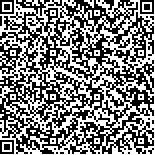下载中心
优秀审稿专家
优秀论文
相关链接
摘要

在气候变化背景下,植被物候作为生态系统对环境变化响应的直接体现方式,日益受到学界关注。获取长期、连续、多尺度的植被物候数据是物候研究的基础,而利用卫星遥感手段获取的物候参数已经成为陆地生态系统变化研究的重要指标。遥感物候参数在农业生产管理、生态系统监测、土地利用类型制图、人类健康和生态系统气候变化响应等领域发挥着重要的作用。在此背景下,有必要结合关键科学问题与重要应用领域,系统梳理近些年来遥感物候参数提取、验证和产品研发方面的进展,指出本领域目前存在的问题并对未来的发展趋势进行展望。首先,探讨了植被指数、日光诱导叶绿素荧光和植被光学厚度等传统与新兴遥感指标在物候监测方面的应用趋势。其次,分析评述了植被物候遥感方法体系中不同的时序数据预处理与物候期估算算法之间的优劣及适用性。然后,从传统物候观测、物候相机、通量观测和无人机等方面的发展,梳理出多源、多尺度验证方式的发展脉络。同时,着重从产品算法和精度方面评述了近些年国内外物候遥感产品的发展现状。最后,从数据预处理、参数提取方法和遥感数据源等不同角度对植被物候参数遥感提取结果中的不确定性和误差来源进行了系统探讨。在以上基础上,本文指出未来植被物候遥感领域的研究应重点关注:(1)从遥感数据源质量和时空一致性入手,提高不同研究结果之间的可比性;(2)发展具有更好普适性的物候参数提取算法,减少提取过程中的主观性和经验性;(3)以遥感真实性检验理论为基础,完善遥感物候地面验证方法体系;(4)积极拓展基于国产卫星的植被物候监测应用,积累国产卫星的使用经验并逐步摆脱对国外卫星数据的过度依赖。通过以上发展,最终满足实际应用中对于高分辨率、高精度、高时空一致性植被物候参数遥感产品的迫切需求。
In the context of climate change, vegetation phenology, as a direct manifestation of the ecosystem’s response to environmental changes, has attracted increasing attention from the academic community. Obtaining long-term, continuous, multi-scale vegetation phenology data is the basis of phenological research, and the phenological parameters obtained by satellite remote sensing have become an important indicator of terrestrial ecosystem change. Remote sensing phenological parameters play an important role in the fields of agricultural production management, ecosystem monitoring, land use type mapping, human health, and ecosystem climate change response. In this context, key scientific issues and application fields must be combined to systematically sort out the progress in remote sensing phenological parameter extraction, verification, and product development and to predict to future development trends. First, this article discussed the development of emerging sunlight-induced chlorophyll fluorescence and vegetation optical thickness in addition to the traditional vegetation indices in phenological monitoring. Second, this paper discusses the advantages, disadvantages, and applicability of different time series data preprocessing and phenological metrics retrieval algorithms. Then, this article sorts out the development context of multi-source and -scale verification methods from the development of traditional phenological observations, phenological cameras, flux observations, and unmanned aerial vehicles. Meanwhile, this article introduces the development status of domestic and foreign phenology remote sensing products in recent years, with emphasis on product accuracy. Finally, this article systematically discusses the propagation of errors to the retrieved phenological metrics resulting from different aspects of data preprocessing, parameter extraction methods, and remote sensing data sources. On this basis, this article points out that future research in the field of vegetation phenology remote sensing should focus on the following: (1) better comparability between different research results should be targeted by improving the quality of remote sensing data sources and spatial and temporal consistency; (2) the subjectivity in the phenological retrieval algorithms should be reduced by developing universal algorithms; (3) the complete ground validation scheme should be established by leveraging the development in theory and method of quantitative remote sensing validation field; (4) the experience of using Chinese satellite data for monitoring vegetation phenology should be accumulated by actively extending the application of different Chinese spaceborne sensors. Through the above development, the overarching aim is to meet the demand for high-quality vegetation phenology remote sensing products in various scientific and practical applications.

